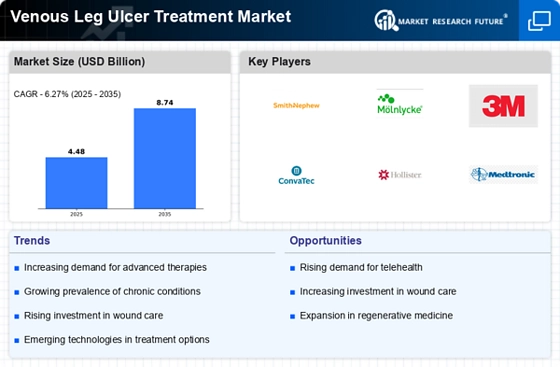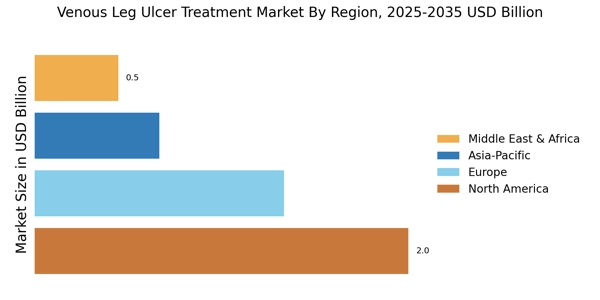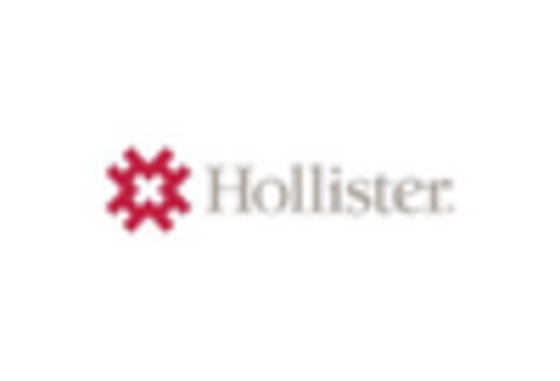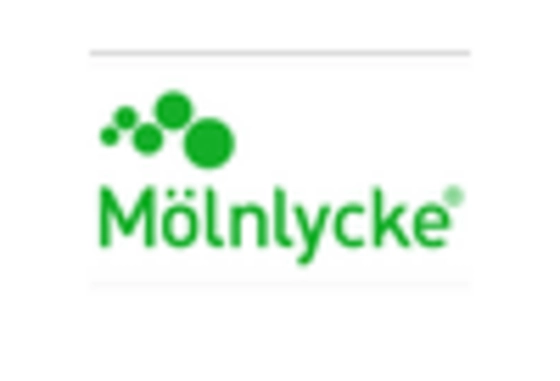Shift Towards Patient-Centric Care Models
The shift towards patient-centric care models is transforming the Venous Leg Ulcer Treatment Market. Healthcare providers are increasingly focusing on personalized treatment plans that consider individual patient needs and preferences. This approach not only enhances patient satisfaction but also improves adherence to treatment regimens. Data suggests that patient engagement in their care leads to better health outcomes, particularly in chronic conditions like venous leg ulcers. As healthcare systems adopt more holistic and integrated care models, the demand for tailored treatment options is likely to increase. This trend may drive innovation within the Venous Leg Ulcer Treatment Market, as companies strive to develop solutions that align with patient-centric philosophies.
Technological Innovations in Treatment Modalities
Technological advancements play a pivotal role in shaping the Venous Leg Ulcer Treatment Market. Innovations such as bioengineered skin substitutes, advanced wound dressings, and telemedicine solutions are transforming treatment approaches. For instance, the introduction of negative pressure wound therapy has shown promising results in enhancing healing rates and reducing treatment times. Market data indicates that the adoption of these technologies is on the rise, with a projected growth rate of over 8% annually in the next few years. These advancements not only improve patient outcomes but also streamline healthcare processes, making them more efficient. As healthcare providers increasingly embrace these technologies, the Venous Leg Ulcer Treatment Market is expected to expand, driven by the demand for effective and efficient treatment options.
Growing Awareness and Education on Venous Leg Ulcers
The rising awareness and education initiatives regarding venous leg ulcers are crucial drivers of the Venous Leg Ulcer Treatment Market. Healthcare professionals and patients are becoming more informed about the causes, symptoms, and treatment options available for venous leg ulcers. Educational campaigns and training programs are being implemented to enhance understanding and promote early intervention. This increased awareness is likely to lead to earlier diagnosis and treatment, which can significantly improve patient outcomes. Market data indicates that regions with robust educational initiatives report higher treatment rates and better management of venous leg ulcers. As awareness continues to grow, the demand for effective treatment solutions within the Venous Leg Ulcer Treatment Market is expected to rise, creating opportunities for market players.
Rising Healthcare Expenditure and Investment in Wound Care
The increase in healthcare expenditure is a significant driver for the Venous Leg Ulcer Treatment Market. Governments and private sectors are investing more in healthcare infrastructure, particularly in wound care management. This trend is evident in various regions, where healthcare budgets are being allocated to improve treatment facilities and access to advanced therapies. Data suggests that global healthcare spending is projected to reach over 10 trillion USD by 2025, with a notable portion directed towards chronic wound care. This influx of funding is likely to enhance the availability of innovative treatment options, thereby fostering growth in the Venous Leg Ulcer Treatment Market. Additionally, increased investment in research and development is expected to yield new therapies that could further address the complexities of venous leg ulcers.
Aging Population and Increased Incidence of Venous Leg Ulcers
The aging population is a critical driver of the Venous Leg Ulcer Treatment Market. As individuals age, the prevalence of chronic conditions, including venous insufficiency, rises significantly. This demographic shift leads to an increased incidence of venous leg ulcers, necessitating effective treatment options. According to recent data, approximately 1-2% of the elderly population suffers from venous leg ulcers, which translates to millions of affected individuals. The growing need for specialized care and advanced treatment modalities is likely to propel the market forward, as healthcare systems adapt to manage this rising burden. Furthermore, the aging population often requires long-term care solutions, which may further stimulate demand for innovative products and services within the Venous Leg Ulcer Treatment Market.


















Leave a Comment